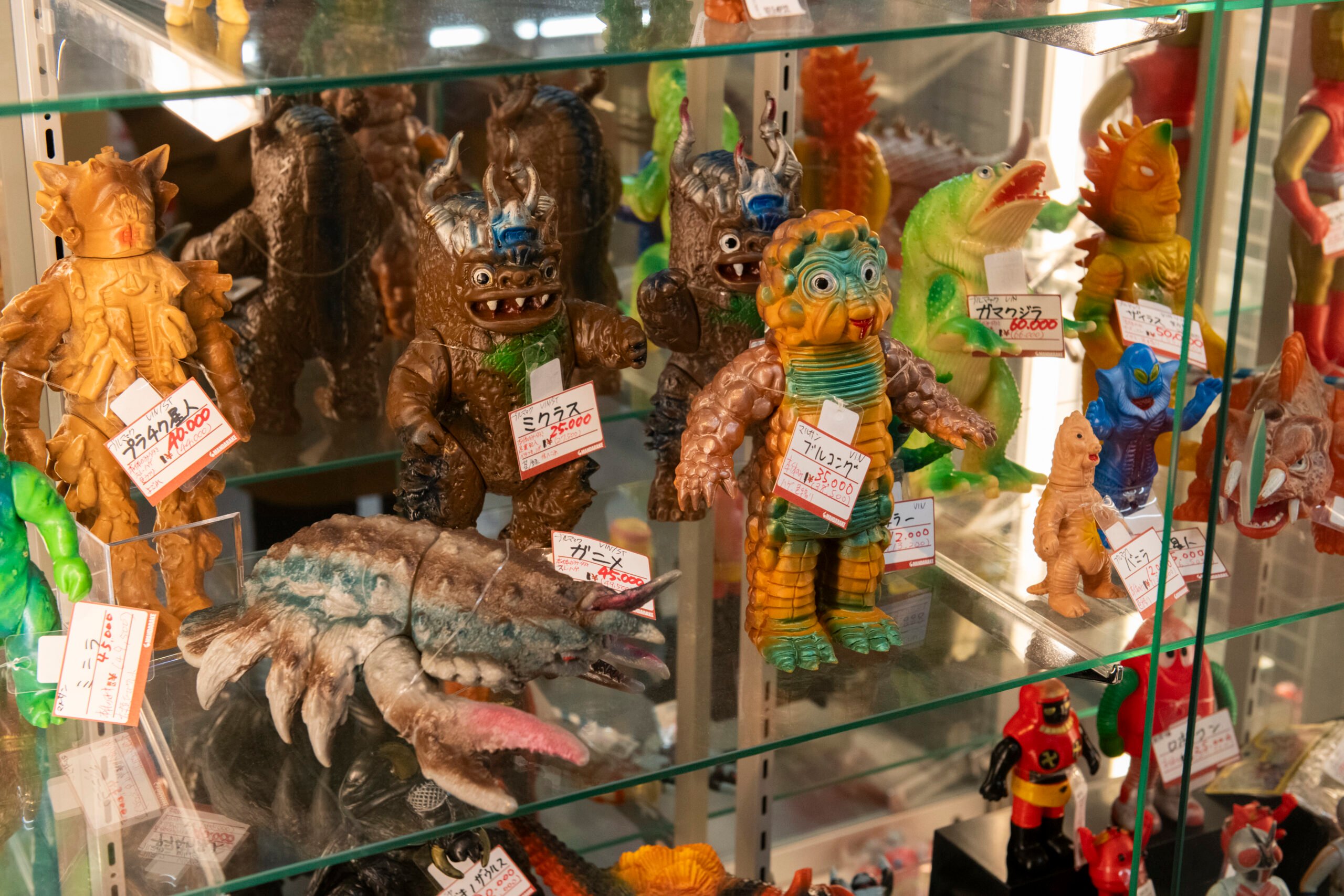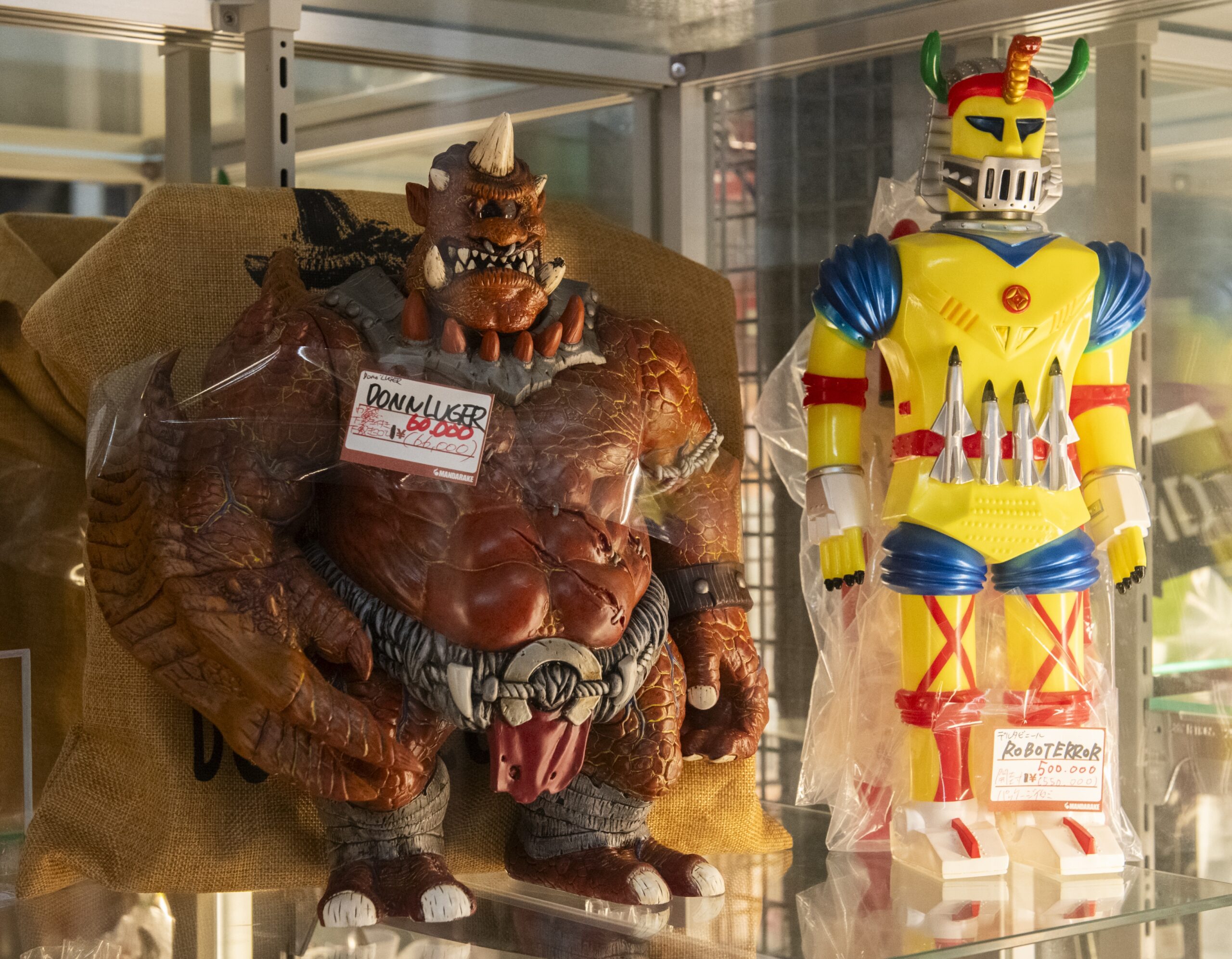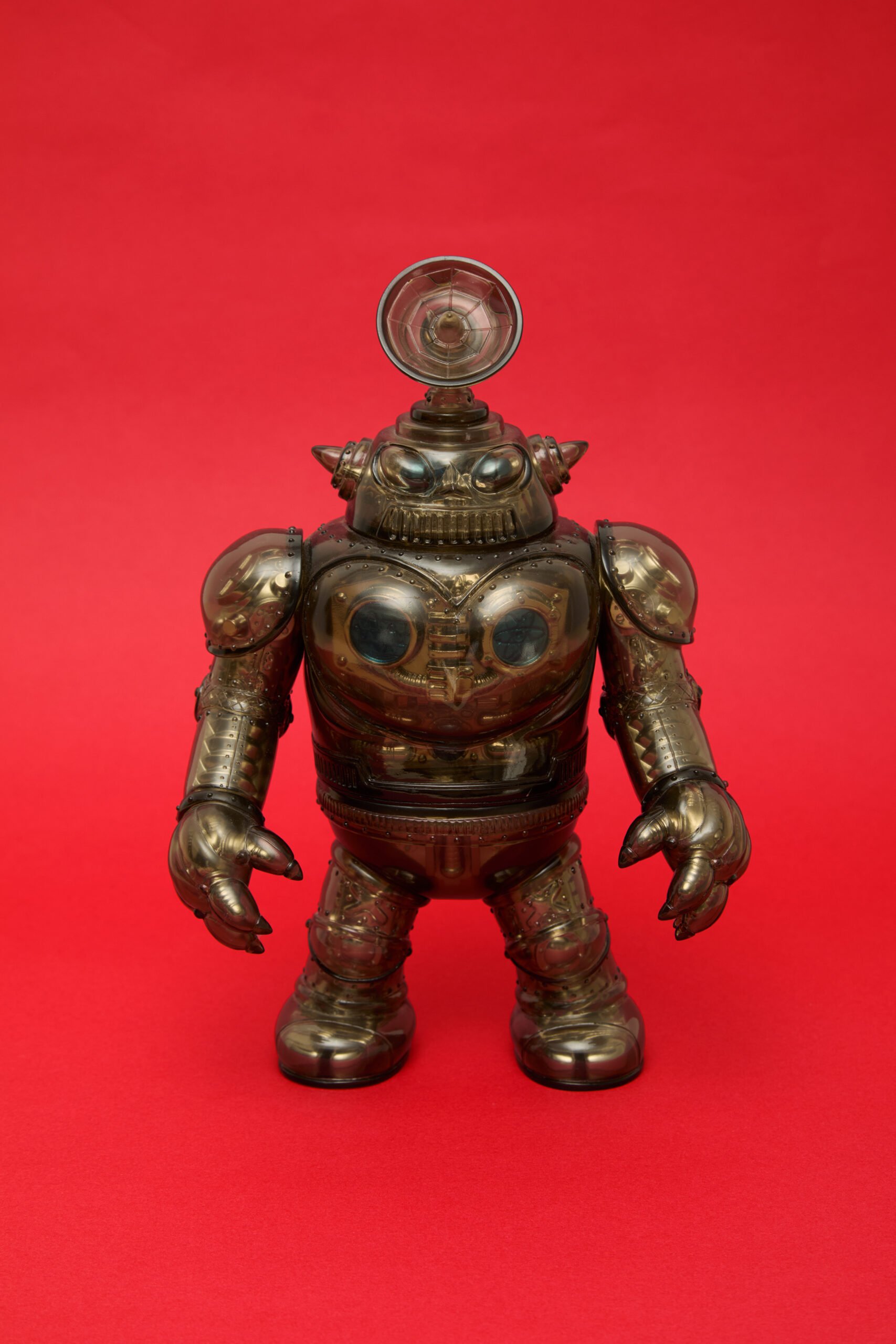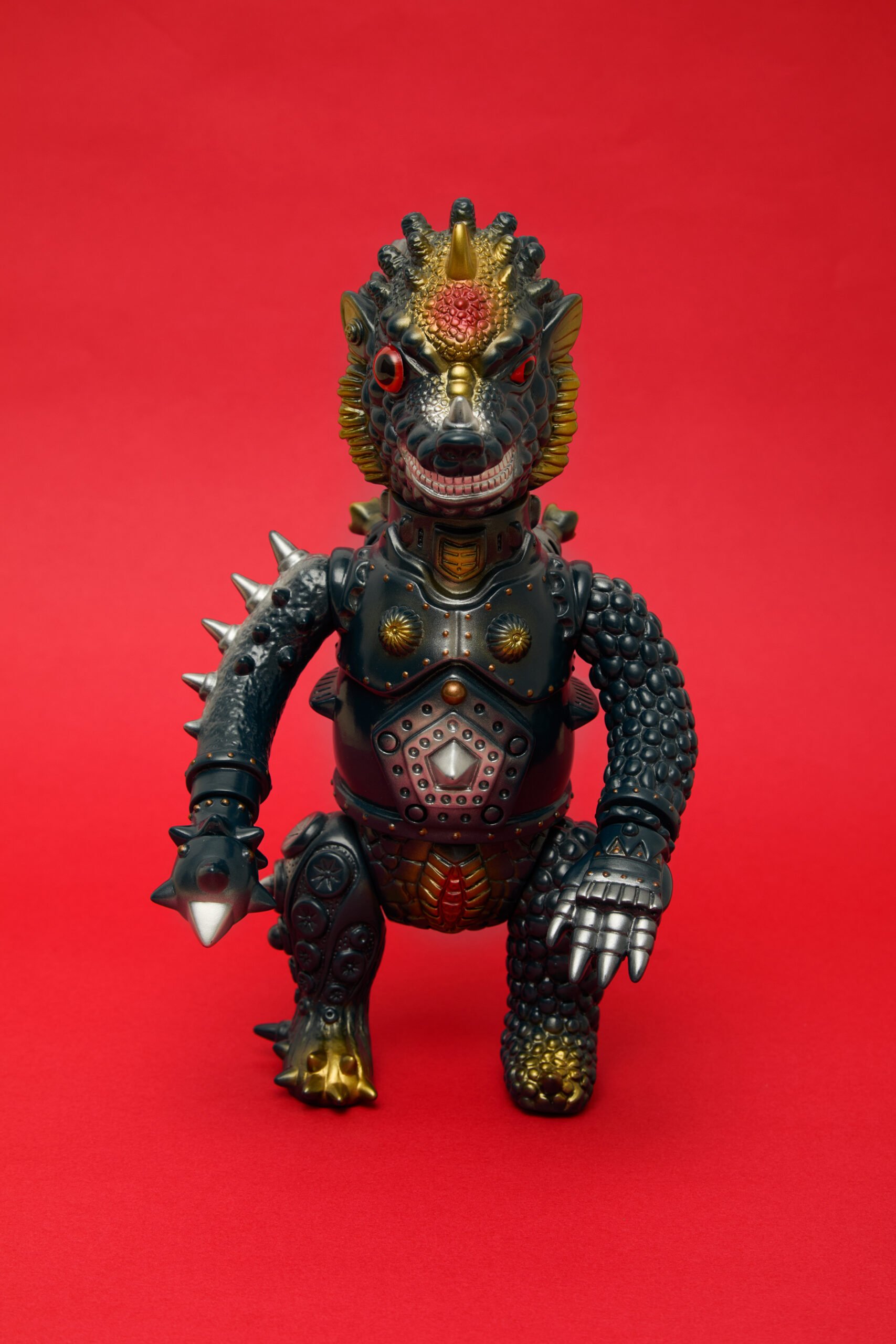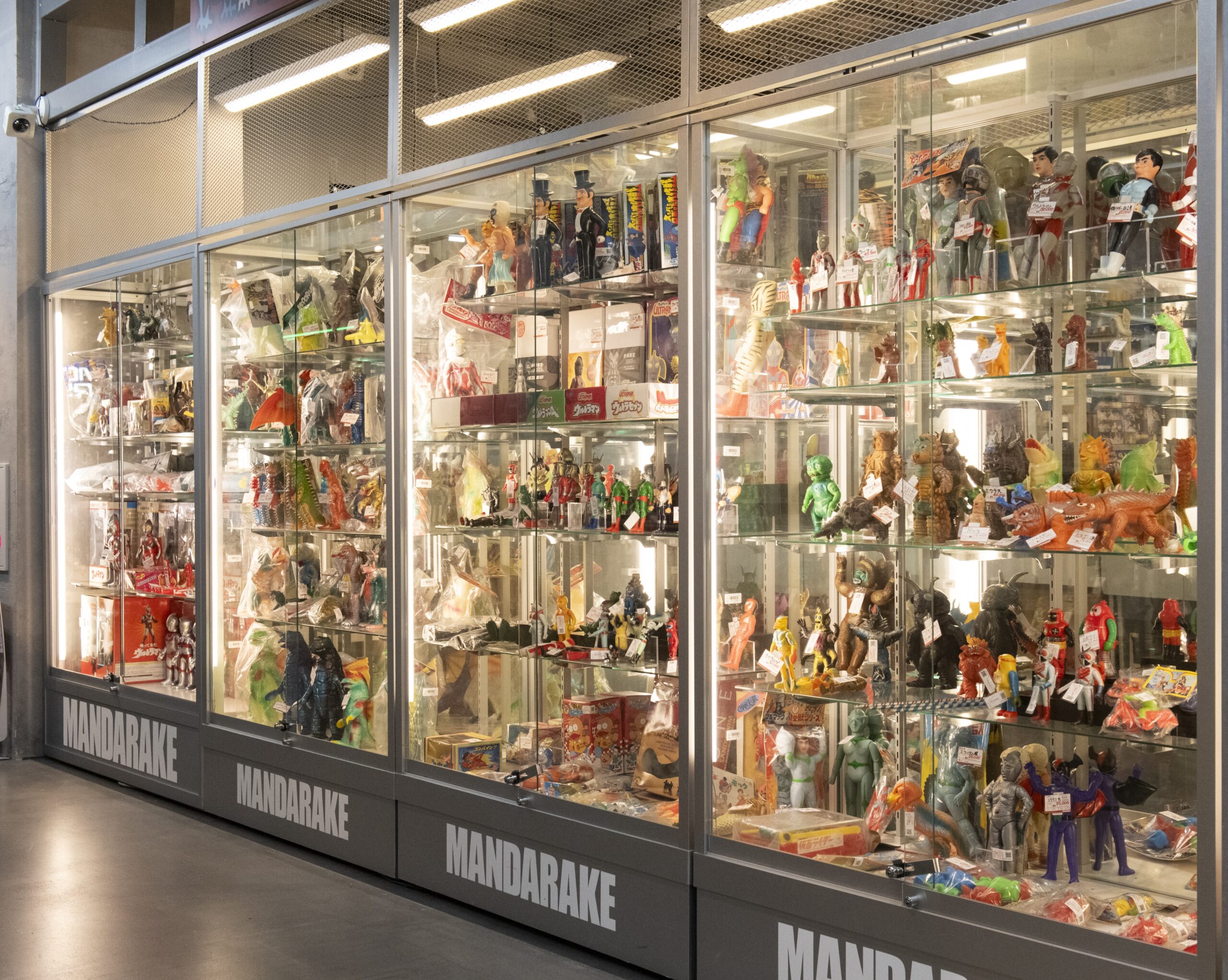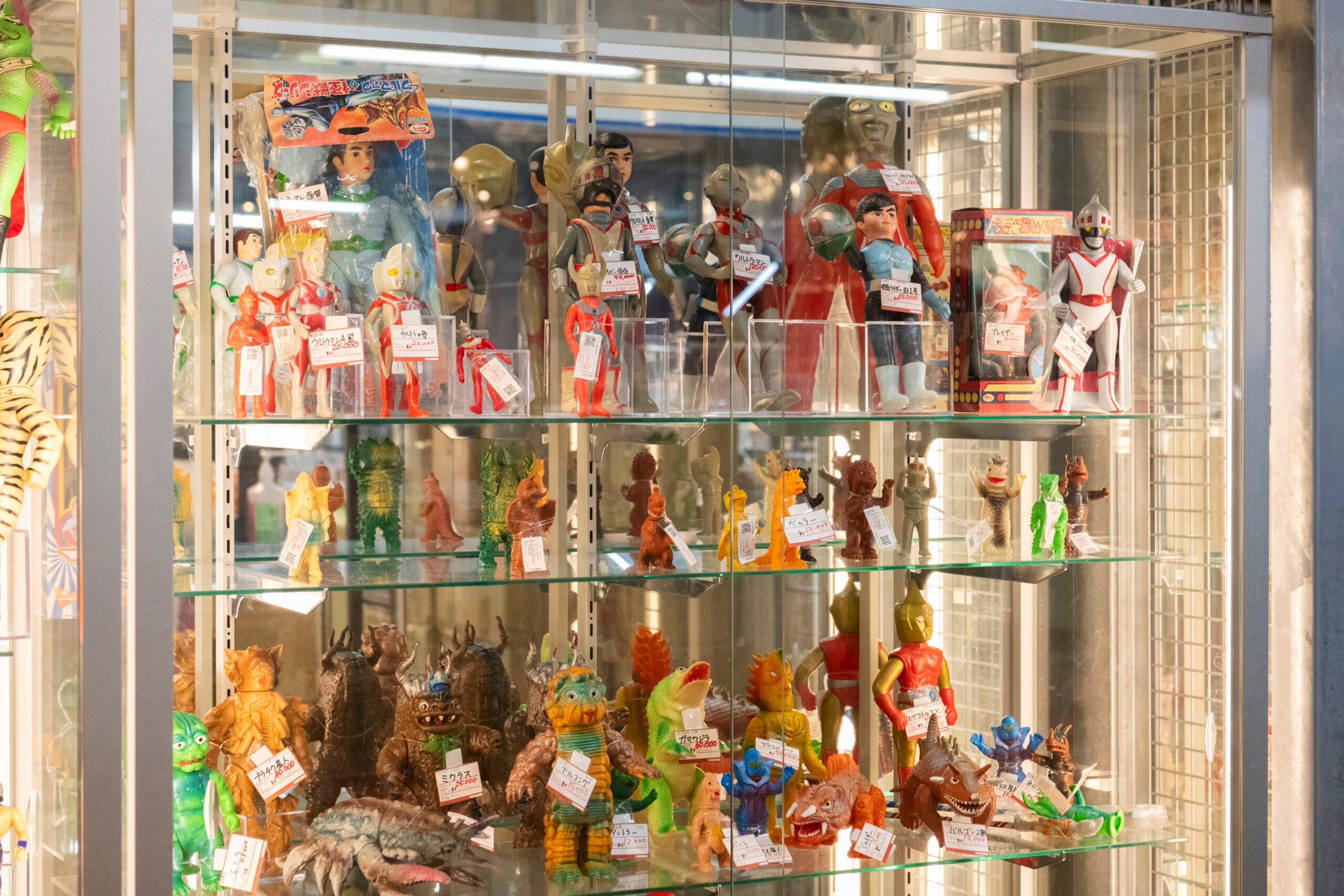CATEGORY
AREA
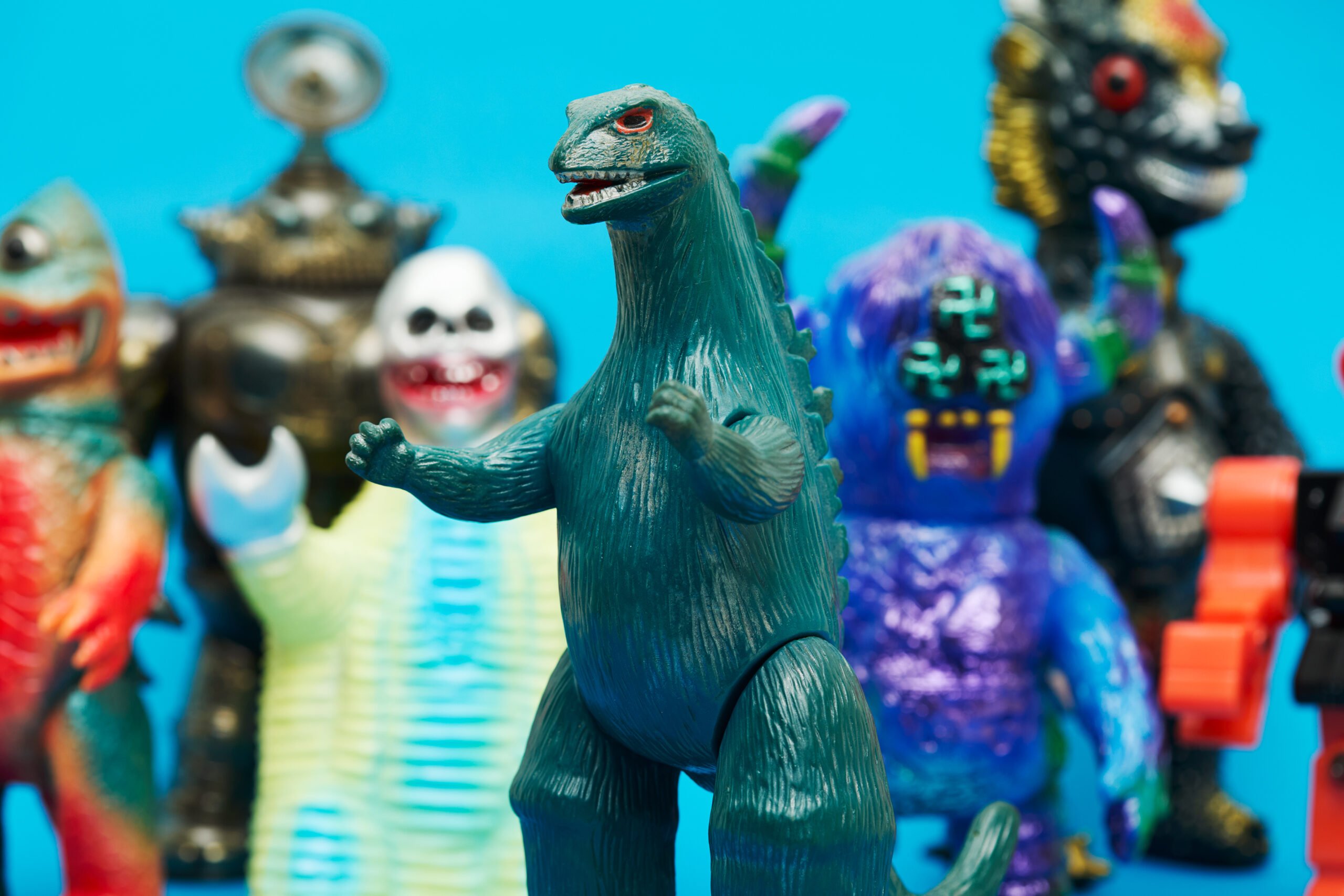
2025.02.27
The term Sofubi (short for "soft vinyl figures") refers to toys made from soft vinyl material. Roughly half a century ago, these figures became immensely popular among Japanese children. Colorful monsters and heroes from franchises like Godzilla and Ultraman were crafted in small Tokyo workshops, sparking excitement and imagination in countless young fans. Today, sofubi is once again in the spotlight—not just as toys but as art pieces and a cultural movement. What has driven this resurgence, and why is sofubi being rediscovered in a whole new light?
To truly understand the appeal of sofubi, we must first take a look back at its origins.
In 1966, the Tokyo-based toy manufacturer Marusan released a series of sofubi figures featuring monsters from the special effects TV show Ultra Q. The figures became an instant sensation, leading to the production of Godzilla and Ultraman sofubi as well. Other toy manufacturers soon followed suit, and before long, children all over Japan were captivated by these soft vinyl figures.
What made sofubi so appealing was its vivid colors, lightweight design, and durability. Kids could play with them anywhere—at the sandbox, in the bath, or all around the house—making them an inseparable part of childhood memories. However, as the 1970s rolled in, the rise of plastic and metal toys, along with the growing popularity of model kits, led to a decline in the sofubi craze.
However, nostalgia has a way of bringing things back to life. As the children who once played with sofubi grew older, some began seeking out vintage figures to relive their childhood memories. By the 1990s, sofubi was no longer seen as mere playthings but as collectible artifacts that symbolized an era. A pivotal moment came when popular TV programs featuring antique appraisals began valuing vintage sofubi at high prices, cementing their status as prized collector’s items.
At the same time, a new movement was taking shape. Instead of large toy manufacturers, independent shops, artists, and even punk bands began creating their own original sofubi figures in the 1990s. These ranged from designs reminiscent of classic Marusan monsters to unique creations influenced by street culture. This emerging scene, known as indie sofubi, gradually built a dedicated following.
As a result, sofubi, once a childhood toy, evolved into a sought-after collector’s item, giving birth to a new era of sofubi culture.
Vintage sofubi from the 1970s
Indie sofbi in recent years
From the 2000s onward, an increasing number of creators began designing and releasing original sofubi figures. Many of these were influenced by American West Coast street culture and the art toy movement that was gaining momentum in Hong Kong. As a result, Japanese sofubi started attracting attention not just domestically but also overseas.
By the late 2010s, Japanese sofubi artists were actively showcasing their works in exhibitions across Asia. This international exposure led to a surge in popularity, especially in Asian markets.
HxS "Brutal A" (2021)
Why is Japanese indie sofubi attracting so much attention? We believe there are two major reasons.
One is "diversity”. Because indie sofubi are produced in small batches, creators enjoy the freedom to experiment with unique designs and concepts. The scene includes a wide range of artists, from monster enthusiasts and illustrators to tattoo artists, art school students, company employees, and even contemporary fine artists. As a result, indie sofubi showcase a remarkable variety of styles—from fierce and wild to cute and whimsical, from sleek and stylish to humorous and eccentric. Each figure embodies the artist’s unique vision, making every piece one of a kind.
Another is "nostalgia”. Sofubi is deeply tied to Japan’s post-war economic boom, a period when children played with these toys while dreaming of a bright future. Though the popularity of sofubi faded over time, this very decline has imbued them with a nostalgic charm.
Unlike hard plastic figures, sofubi features a uniquely soft and tactile texture. Each piece is hand-painted by artisans, giving them a warmth that mass-produced figures lack. These qualities make sofubi nostalgic for older generations while offering something fresh and intriguing to younger fans
Many of today’s most popular indie sofubi feature retro-inspired designs that pay homage to vintage figures. This nostalgia-driven appeal resonates not just with Japanese collectors but with international fans as well. In some ways, it mirrors the recent global resurgence of interest in Japan’s 1980s city pop and kayōkyoku music—a rediscovery of the past through a contemporary lens.
Gargamel "Zagoran" (2005)
IZUMONSTER "Valhalla" (2021)
Located in Akihabara, Tokyo, "Mandaredare CoCoo" is a must-visit destination for sofubi enthusiasts. As one of Japan’s largest sofubi specialty stores, it attracts collectors from around the world. Walking through its doors feels like stepping into a sofubi museum—glass cases display an extensive selection of figures, from indie creations to rare vintage pieces, meticulously categorized by genre.
Inside the "Mandarade CoCoo" store
According to Mandarake CoCoo’s store manager, Teppei Fujita, the demand for vintage sofubi has surged in recent years. "Until about five years ago, indie sofubi was at the center of attention. However, we’ve recently seen a dramatic rise in interest toward vintage sofubi, particularly among international collectors. Many who initially collected indie sofubi are now drawn to its origins—the vintage originals."
This trend has been significantly influenced by Japanese collectors on social media and YouTube. During the pandemic, when people spent more time at home, interest in vintage sofubi spread rapidly among indie collectors, particularly across Asia.
"In the past, international customers primarily sought well-known characters like Godzilla and Ultraman. But lately, there’s been a growing demand for unlicensed sofubi, obscure heroes, and rare color variations. Some overseas collectors are now even more knowledgeable about sofubi than many Japanese enthusiasts. The increasing number of collectors in Asia, where the population is vast, has also contributed to skyrocketing prices for vintage sofubi."
A corner of the vintage soft vinyl department of "Mandarade CoCoo
As sofubi continues to gain global popularity, an increasing number of international creators are designing their own original figures. Sofubi toy conventions are now held across various countries, signaling its evolution into a truly international culture. At Mandarake CoCoo, the store features unique sofubi pieces by creators from around the world. Fujita highlights some particularly noteworthy works.
"One of the most popular overseas sofubi brands right now is Taiwan’s Lao Yu Zhi. It has a strong following within Taiwan, known for its distinct artistic style. Another rising Taiwanese artist, LEMAO TOY, creates figures inspired by local characters while incorporating unique sculptural designs. Many of their works also pay homage to vintage unlicensed kaiju sofubi, making them particularly intriguing." An American brand that has been gaining attention is Creature Bazaar. Fujita himself is a fan and has personally collected several of their figures.
LEMAO TOY "RALF" (2024)
China’s sofubi scene has also been expanding rapidly. "A standout is Kollectron, which draws heavy inspiration from Japanese vintage toys. Their designs have a strong niche appeal. Meanwhile, Crisis, a sofubi-focused gallery in Shanghai, collaborates with artists from around the world, continuously introducing fresh and original sofubi figures."
Kollectron "Space Dino" (2024)
Crisis Gallery, "Hand Puppet" (2024)
New sofubi figures are being produced almost daily somewhere in the world.
With an overwhelming variety of sofubi available, how should beginners choose their first piece?
Fujita offers this advice: "The best part about sofubi is that you don’t need any prior knowledge to enjoy it. Just pick a figure that speaks to you—the one with a shape or design that excites you. Many indie sofubi pieces are only available at specialty stores in Japan, so I recommend visiting a shop and holding them in your hands." "Once you’ve purchased a figure you like, research its creator or brand. That’s how you’ll naturally find yourself diving deeper into the fascinating world of sofubi."
The word SOFUBI is now recognized internationally, transcending language and cultural barriers. What started nearly 60 years ago as soft vinyl kaiju toys made by Tokyo manufacturers has evolved into collector’s items for adults, artistic creations by independent makers, and a globally celebrated culture. Sofubi is no longer just a Japanese phenomenon—it has become a unique and thriving movement worldwide.
Writer, pachinko monster soft vinyl collector, soft vinyl research and development. Author of "Salaryman Manga no Sengo Shishi" (Postwar History of Salaryman Manga), published by Yosen-sha.
Instagram @pachikaiju

